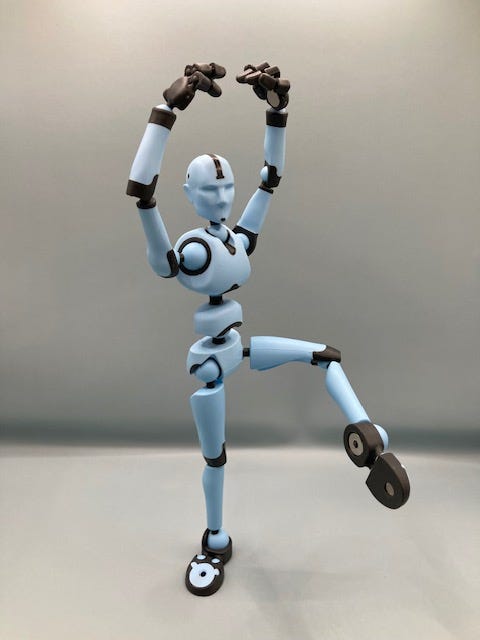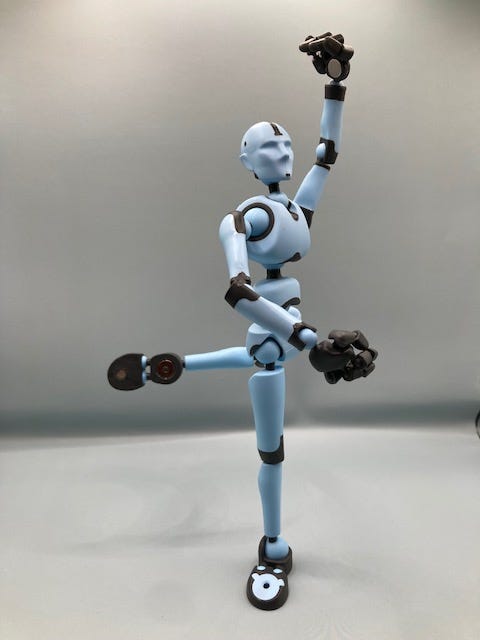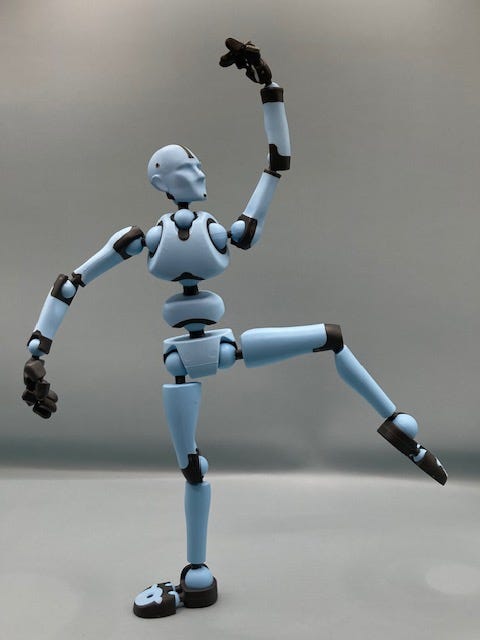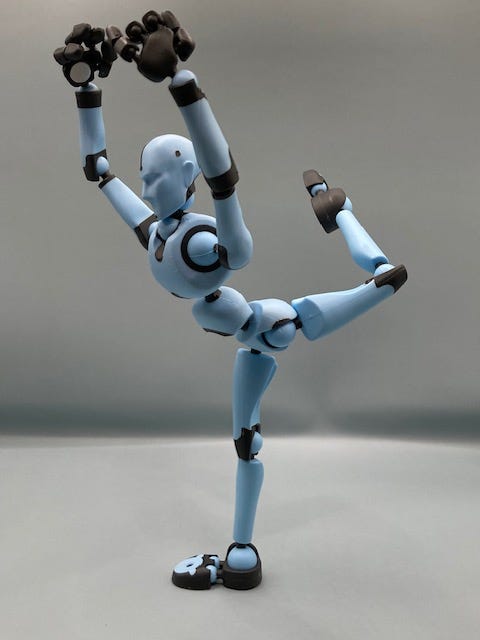French For Dancers Newsletter: Attitude
French For Dancers
Demystifying dance terminology and steps for dancers and dance-lovers!
Issue 17: Attitude
Bonjour! Welcome to French For Dancers!
How’s your attitude?
Parlez-Vous Ballet?
(Do you speak Ballet?)
ATTITUDE
(at-it-ewd)
The word attitude is spelled and pronounced similarly in English and French. Finalement! (Finally!). The definition is similar, too – while the term in French tends to describe a physical posture or bearing (“she flopped forward in an attitude of exhaustion”), it can also describe a mental state (“her optimistic attitude about practicing her turns led her to do a triple pirouette”).
In ballet, attitude is a pose where the dancer stands on one leg and the other leg is lifted but bent at the knee, creating a spiraled line. The lifted leg is turned out and traditionally raised between 45 and 90 degrees – though higher extensions are frequently seen in advanced dancers and in the Vaganova technique. The knee of the lifted leg should be facing outward and higher than the foot – until 90 degrees, when the foot lifts to the same height or higher.
Attitude is most commonly performed to the front (devant) or back (derrière), but the side attitude (de côté) is found in more contemporary choreography.
Savoir-Faire
(Know-How)
Student Tip:
Like its cousin the arabesque, an attitude balance requires core strength (especially in the back and obliques), as well as strength and flexibility in the hips and hamstrings. It takes strength to developpé the leg into attitude and hold it, rather than kicking it up. Make sure the thigh lifts as it moves from retiré or passé into attitude – leading from the thigh and knee, not the foot.
Balance right over the standing leg and keep the lifted leg squarely in front or behind you – no “dog at the fire hydrant” side-lifted back attitudes allowed!
A good test of the stability and turnout of the lifted leg in front attitude is to imagine you’re resting a teacup on your inner thigh – will the tea spill or will it stay still? Use a water bottle to try it out! For an even harder challenge, try placing it on the inside of your instep on the lifted foot – if the leg and foot are really turned out, it will stay!
Teacher Tip:
The shape of the attitude varies with different techniques and teachers. Some teachers and choreographers prefer a tighter angle in the lifted leg, keeping the foot closer to the body (but still turned out). This is often found in Balanchine’s choreography.
A more traditional (European) attitude opens up the leg to elongate the line but keeps the legs at a 90-degree angle, or slightly higher.
The tilted attitude (think Odette in Swan Lake) brings more dramatic flair, with the lifted foot higher than the lifted knee (and above the dancer’s head). This is more common in Vaganova technique.
In all cases, the spiral, or line, of the attitude’s lifted leg should pass from the hip to the knee to the toes. And the spiral usually continues into the upper body, whether the arms are in 4th, 5th, or another position. In this case, the spiral does not twist, as the dancer’s upper body should remain square to the hips, but the line should start at the fingertips and end at the toes.
As part of the spiral feeling of the attitude, the opposite shoulder should remain squared to and feel connected to the toes of the lifted leg, rather than dropping forward or twisting sideways. Keeping the upper body connected to the lower body in attitude is crucial as students progress into attitude turns and renversé positions.
À La Carte
(From the Menu)
Recommendations, reflections, and/or useful links
This variation shows lovely attitudes, both derrière and devant. Marianela Nunez makes it all look so effortless and elegant as Dulcinea in the Royal Ballet’s Don Quixote. Come for the attitudes, stay for the fiendish hops on pointe, and enjoy her beautiful smile throughout!
Merci!
(Thank you!)
Thank you for reading this newsletter! If you have friends who might enjoy this, please share the link with them!
- Peggy







